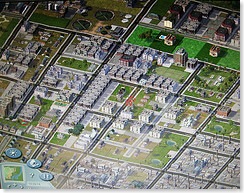Via SlashDot comes a brief soundbyte (or rather textbyte) from James Cameron, who posits that the pore-deep photorealistic CGI techniques that allowed him to create current box-office smash Avatar could be used to recreate the youthful looks of popular actors who’re getting on a bit…
… Cameron’s facial scanning process is so precise—zeroing in to the very pores of an actor’s skin—that virtually any manipulation is possible. You may not be able to totally replace an actor—“There’s no way to scan what’s underneath the surface to what the actor is feeling,” the director notes—but it is now theoretically possible to extend careers by digitally keeping stars young pretty much forever. “If Tom Cruise left instructions for his estate that it was okay to use his likeness in Mission Impossible movies for the next 500 years, I would say that would be fine,” says Cameron.
More Tom Cruise movies? After he dies? That’s about the strongest justification for banning this technology entirely, if you ask me…
Less fine, at least to Cameron, is bringing long dead stars back to life. “You could put Marilyn Monroe and Humphrey Bogart in a movie together, but it wouldn’t be them. You’d have to have somebody play them. And that’s where I think you cross an ethical boundary…”
Hmm… so what if you had Monroe and Bogart played by AI simulations of Monroe and Bogart, based on every second of footage available in the digital cultural corpus? Would that be crossing an ethical boundary? Would it be the same boundary as having someone else (made of meat) play them beneath the mask of CGI? And anyway, didn’t they threaten/promise [delete as appropriate] that CGI would mean the death of the overpaid “box office draw” Hollywood superstar? Answers on a postcard, please…
More seriously, though – how do we expect new and exciting actors to rise through the ranks if we just keep recycling the faces of the past? Or will the actors of the past become characters in their own right, adding another sort-of-meta layer to the cinema experience? “[Actor X] is currently wowing cinema-goers with his flawless performance as Clint Eastwood reprising the epochal Dirty Harry role…”
 An
An  Know how to make a virtual human avatar that could convincingly interact with a family member? If so, the U.S. Department of Defense wants to talk to you. Its
Know how to make a virtual human avatar that could convincingly interact with a family member? If so, the U.S. Department of Defense wants to talk to you. Its 